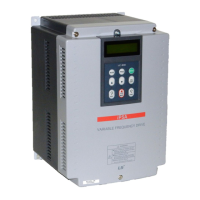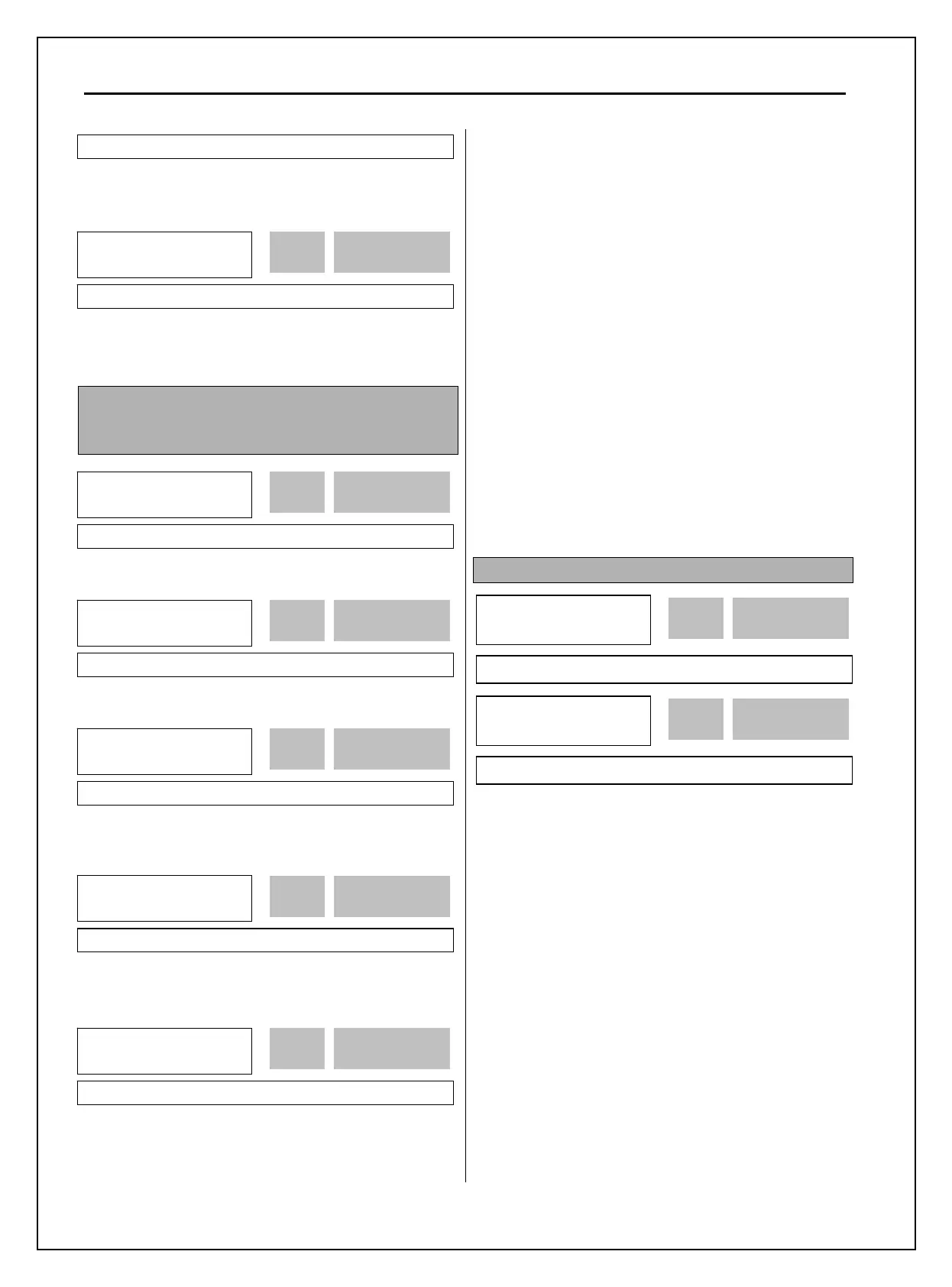Chapter 6 - Parameter Description [APP]
6-62
This is the frequency upper limit at which the output
frequency is limited during PID control.
This is the frequency lower limit at which the output
frequency is limited during PID control.
APP-12: PID Output Scale
APP-13: PID P2 Gain
APP-14: P Gain Scale
This code sets the scale of PID controller output.
This code sets the second P-Gain for PID control.
This code sets the conversion scale of P-Gain and P2-
Gain.
APP–15 [Output inversion] sets PID controller’s
output inversion.
This code is useful for fan and pumps application. It
converts linear pattern of a feedback sensor to the
squared pattern without any setting.
PID output value can be set to ‘0’ by setting a
Programmable digital input terminals (M1 ~ M8) to
‘Open loop’ in I/O- I/O-20 ~ I/O-27.
The accumulated value by I-Gain can be set to ‘0’ by
setting a Programmable digital input terminal (M1 ~
M8) to ‘iTerm Clear’ in I/O-20 ~ I/O-27.
The P-Gain 2 can be selected for PID controller by
setting a Programmable digital input (I/O-20 ~ I/O-
27) to ‘Open-loop’.
When APP-02 [PID operation selection] is set to
“Yes,” a desired display unit in I/O-86, -87, -88 [User
Unit selection] is set among Speed, Percent, Bar,
mBar, kPa, Pa, which affects value display of APP-
06[PID feedback selection], all the parameter unit
related to inverter target frequency is changed.
APP-20 ~ APP-29: 2
nd
Functions
These functions are displayed only when one of the
multifunction inputs in codes I/O-20 to I/O-27 is set
at ‘2nd func’.
When an inverter is controlling two motors by
exchanging, different values can be set for the 2
nd
motor by using the multifunction input terminal.
Following a cross reference table shows the 2
nd
functions corresponding to the 1
st
functions.
Factory Default: 60.00 Hz 60.00
APP
►
PID limit-L
11 0.5 Hz
0.5 11
Factory Default: 0.5 Hz 0.5
APP
►PID Out Scale
12 100.0 %
100.0 12
Factory Default: 100.0 % 100.0
APP
► PID P2-gain
13 100.0 %
100.0 13
Factory Default: 100.0 % 100.0
APP
►P-gain Scale
14 100.0 %
100.0 14
Factory Default: 100.0 % 100.0
APP
► PID U Fbk
17 No
0 17
Factory Default: NO 0
APP
► PID Out Inv.
15 No
0 15
Factory Default: No 0
APP
►
2
nd
Acc time
20 5.0 sec
5.0 20
Factory Default: 5.0 sec 5.0
APP
►
2
nd
Dec time
21 10.0 sec
10.0 21
Factory Default: 10.0 sec 10.0

